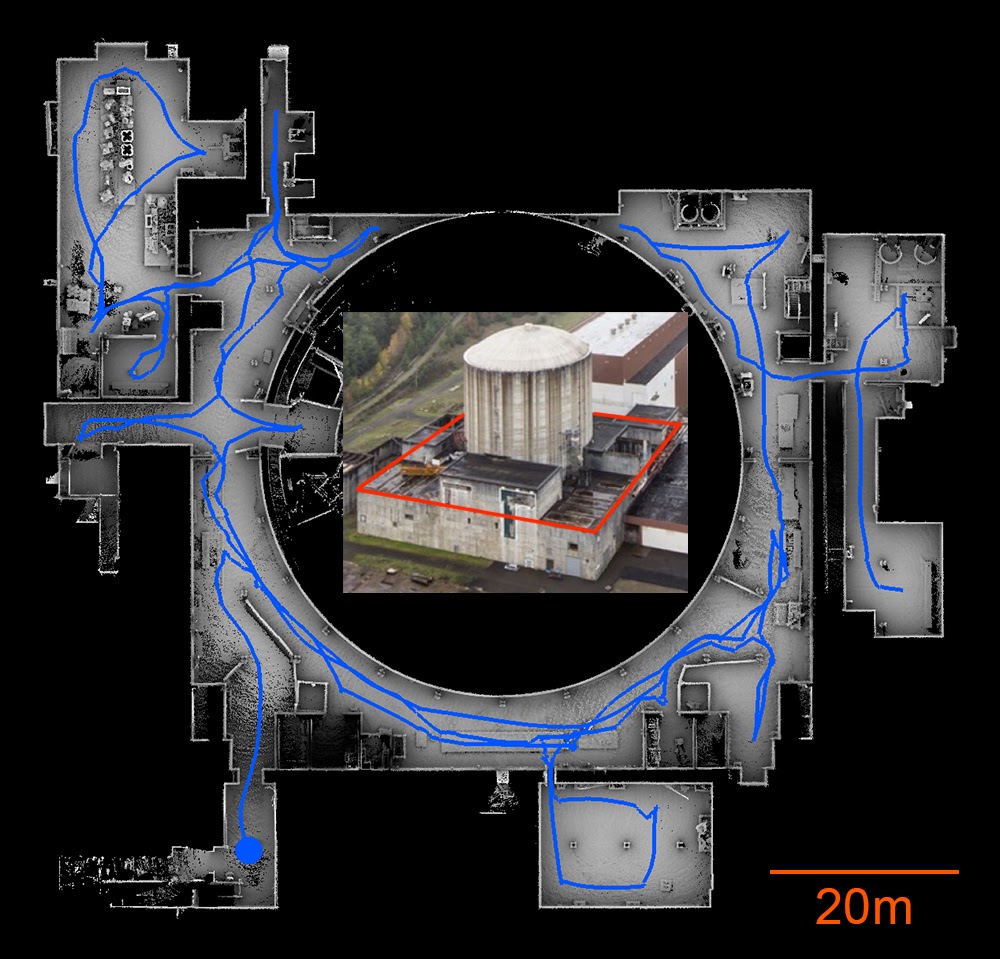TARE planner involves a hierarchical framework for highly efficient exploration - one level in the framework maintains data densely and computes a detailed path within a local planning horizon, another level maintains data sparsely and computes a coarse path at the global scale. The paths at both levels are joined together to form the exploration path. The framework draws the insight that detailed processing is most effective close to the vehicle, while coarse processing provides sufficient utility far away from the vehicle. The framework trades-off details at the global scale for computational speed. In practice, the framework prioritizes the exploration in the surroundings of the vehicle while keeping the global picture in mind.
Please use instructions on our project page.
The repository has been tested in Ubuntu 18.04 with ROS Melodic and Ubuntu 20.04 with ROS Noetic. Due to usage of OR-Tools library, the code only supports AMD64 architecture and currently does not compile on ARM computers. Follow instructions in Autonomous Exploration Development Environment to setup the development environment. Make sure to checkout the branch that matches the computer setup, compile, and download the simulation environments.
To setup TARE Planner, clone the repository.
git clone https://github.com/caochao39/tare_planner.git
In a terminal, go to the folder and compile.
cd tare_planner
catkin_make
To run the code, go to the development environment folder in a terminal, source the ROS workspace, and launch.
source devel/setup.sh
roslaunch vehicle_simulator system_garage.launch
In another terminal, go to the TARE Planner folder, source the ROS workspace, and launch.
source devel/setup.sh
roslaunch tare_planner explore_garage.launch
Now, users should see autonomous exploration in action. To launch with a different environment, use the command lines below instead and replace '<environment>' with one of the environment names in the development environment, i.e. 'campus', 'indoor', 'garage', 'tunnel', and 'forest'.
roslaunch vehicle_simulator system_<environment>.launch
roslaunch tare_planner explore_<environment>.launch
To run TARE Planner in a Matterport3D environment, follow instructions on the development environment page to setup the Matterport3D environment. Then, use the command lines below to launch the system and TARE Planner.
roslaunch vehicle_simulator system_matterport.launch
roslaunch tare_planner explore_matterport.launch- C. Cao, H. Zhu, H. Choset, and J. Zhang. TARE: A Hierarchical Framework for Efficiently Exploring Complex 3D Environments. Robotics: Science and Systems Conference (RSS). Virtual, July 2021. Best Paper Award and Best System Paper Award.
@inproceedings{cao2021tare,
title={TARE: A Hierarchical Framework for Efficiently Exploring Complex 3D Environments},
author={Chao, Cao and Hongbiao, Zhu and Howie, Choset and Ji, Zhang},
booktitle={Robotics: Science and Systems Conference (RSS)},
year={2021},
month={July},
address={Virtual}
}
- C. Cao, H. Zhu, H. Choset, and J. Zhang: Exploring Large and Complex Environments Fast and Efficiently. International Conference on Robotics and Automation (ICRA), Xi'an, China, June 2021.
@inproceedings{cao2021exploring,
title={Exploring Large and Complex Environments Fast and Efficiently},
author={Chao, Cao and Hongbiao, Zhu and Howie, Choset and Ji, Zhang},
booktitle={IEEE International Conference on Robotics and Automation (ICRA)},
year={2021},
month={June},
address={Xi'an, China}
}
TARE Planner was used by the CMU-OSU Team in attending DARPA Subterranean Challenge. In the final competition which took place in Louisville Mega Cavern, KY, the team's robots conducted the most complete exploration across the site (26 out of 28 sectors) among all teams, winning a "Most Sectors Explored Award". Below is the result from Urban Circuit which took place in Satsop Nuclear Plant, WA. Our vehicle traveled over 886m in 1458s to explore the site, fully autonomously.
Chao Cao (ccao1@andrew.cmu.edu)
OR-Tools is from Google

